Concerns about student math performance in the U.S. have grown in recent years, driven by persistent disparities, pandemic-related disruptions, and stagnating or declining national achievement scores. In response, the Center on Reinventing Public Education (CRPE) convened a panel of math experts to identify priority topics in K-12 math education. For the initial topic, we focused on what we know about providing all students with access to qualified math teachers. Next, we highlight several findings from the issue brief, which summarizes the larger technical report on what is known about three necessary access conditions, standard approaches for addressing barriers, and opportunities for improvement. The issue brief and technical report can be downloaded below.
Two additional resources on the topic can be accessed below. One offers interactive data visualizations featured in the technical report. The other provides an interactive map that examines the extent to which parents are provided with important teacher workforce data in their state’s school report card system, such as information on the number of certified and non-certified teachers in their child’s school.
Key Question: What are the barriers to getting all students access to qualified math teachers who can implement high-quality instruction?
Available data show that there are not enough fully certified mathematics teachers to fill all open teaching positions. And even then, certification is still no guarantee of quality. Moreover, available evidence suggests that commonly used strategies—such as accepting alternative certifications, providing financial bonuses, mentoring and other support for new teachers, and promoting international visa exchanges to attract talent from outside the U.S.—show little evidence of addressing these problems and improving access in the long term.
Findings
- The U.S. lacks systematic and centralized data collection on the teacher workforce. This hinders our ability to fully understand important details about the teacher workforce, both within and across states, making it challenging to identify where specific teachers are needed and for which subjects and grades.
- Teacher turnover remains an issue as we continue to recover from the effects of the pandemic. While the available data does not indicate a mass exodus of teachers following COVID, teacher turnover is still an obstacle, particularly for under-resourced districts and in specific subject areas such as mathematics and schools in low-income neighborhoods.
- Fewer people are completing teacher preparation programs, and the decline is most pronounced in traditional preparation programs and in math. While public school enrollment has not declined significantly compared to over a decade ago, the number of teaching graduates has, resulting in a reduced supply amid unchanged demand. The number of graduates prepared to teach math declined by a full 36% from 2012–13 to 2019–20.
- Educators lack guidance in navigating the “math wars” and need additional support to close the research-to-practice gap. Math teachers continue to implement instructional practices whose effectiveness has been disproven or remains unsupported by research evidence.
- Teacher preparation programs and state certification requirements vary in rigor and focus, often providing minimal math-specific training.
- Current systems for evaluating math teacher effectiveness, such as observational tools, are not designed to assess math-specific knowledge, skills, and practices. Professional development is rarely tied to teacher evaluation systems.
- A lack of consistency and consensus on the what and how of math instruction hinders teacher effectiveness. Teachers in different schools and districts teach different content at different grades and use very different types of curriculum and instructional approaches. This causes problems for students who change schools and are then tested on concepts they have not yet been taught.
- The most common strategies to address these challenges have been largely ineffective. States and districts have most commonly employed the following strategies: 1) lowering barriers to entry via alternative certification programs, 2) offering financial bonuses to attract teachers to hard-to-staff schools or to encourage teachers to stay in the profession, 3) providing mentoring or professional development supports for new teachers, and 4) promoting visa exchange programs to recruit international teachers. Though there haven’t been many rigorous studies to date, current evidence suggests that these strategies and policies have had a limited impact.
Possible Ways Forward
The federal government or a consortium of states could:
- Agree on common teacher workforce metrics to be collected and published at the state and national level to promote a consistent picture of workforce challenges and a targeted approach to address them.
- Create a new national advisory panel to inform teacher practice, incorporating over a decade’s worth of new findings from mathematics research as well as the developmental and cognitive sciences.
Foundations and government research agencies could:
- Prioritize more rigorous research on the reasons for the decline in graduates from traditional teacher preparation programs and on the efficacy of various strategies and incentives to attract and retain more qualified teachers, especially in math.
State and local leaders could:
- Acknowledge and reward experienced, high-performing teachers by granting them a special designation on their teaching license or other career-ladder advancements with additional pay, especially if they teach in high-needs schools or districts.
- Consider performance-based layoff policies to help ensure that districts retain the most effective and diverse teachers in the case of layoffs.
- Use math content assessments to ensure that teachers entering the profession have appropriate content knowledge.
- Provide statewide, job-embedded training to deepen teachers’ understanding of research-based math content and pedagogy.
- Incentivize districts and schools to adopt the recommended high-quality curriculum. Provide aligned professional development and ample time for selection.
America’s students deserve equitable access to teachers who are prepared and empowered to deliver strong math instruction. While the data show troubling declines in the availability of certified math teachers and little evidence that existing strategies are working to reverse this trend, these findings also point to practical, evidence-informed steps policymakers and system leaders can take. These include building better data systems, aligning preparation to research-based standards, and creating incentives that support both recruitment and retention, especially in high-needs settings.
Without deliberate, coordinated action across states and sectors, we risk perpetuating a status quo in which access to effective math teaching remains uneven and insufficient. But with sustained investment in the right levers – data, evidence, and teacher expertise -leaders can ensure that all students, regardless of background or zip code, have a real opportunity to succeed in mathematics.





